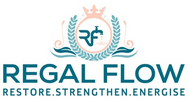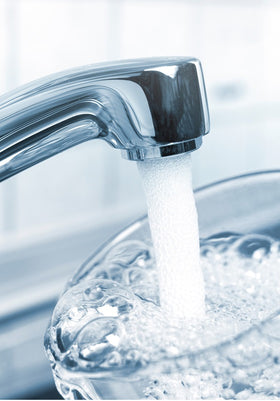
Reverse Osmosis vs Water Softeners: What’s Best for Your Home?
Kettles crusty? Laundry looking sad? You’re not alone—hard water haunts most UK homes. The short answer? Use reverse osmosis for drinking, water softeners for limescale. Want both? Many do! In Reverse Osmosis: The Ultimate Guide to Water Purification, we spill everything—costs, pros, cons, and cheeky plumbing tips.
Understanding Reverse Osmosis
Picture this: you pour yourself a glass of water straight from the tap and it smells… off. Maybe it tastes metallic, or your tea's been a bit naff lately. Enter reverse osmosis—the kitchen’s silent superhero that quietly zaps away impurities. Think of it like a high-tech sieve. Water is pushed through a special membrane that filters out nearly everything you'd rather not drink—heavy metals, chlorine, bacteria, even microplastics. It’s the kind of clean that would make bottled water blush.
Function and Benefits
Reverse osmosis systems are clever little things. They squeeze water through tiny holes that block nasties like lead, pesticides, and dodgy chemicals. The result? Pure, great-tasting water that’s ideal for drinking, cooking, and even that perfect Yorkshire brew.
Why people love RO systems:
-
They deliver top-quality drinking water
-
Ideal for babies or sensitive tummies
-
No funky smells or tastes
-
Fit snugly under the sink without fuss
Limitations
But RO systems aren’t flawless. For every litre of clean water, a few litres go down the drain—it’s not the most efficient process. They also remove healthy minerals like calcium and magnesium, which some people like to keep in their water. Then there’s the maintenance. Those filters need changing every 6 to 12 months, which means a bit of hands-on care (and a minor dent in your wallet). Still, many think the payoff is worth it.
Water Softeners Explained
If your kettle looks like it’s growing coral or your shower head sprays sideways, you’re likely in a hard water area. That’s where water softeners step in—saving your appliances and your sanity. They don’t purify water for drinking, but they do tackle the limescale-causing minerals—mainly calcium and magnesium—that are the culprits behind crunchy laundry and scummy soap residue.
Mechanism and Advantages
Water softeners work using ion exchange (sounds fancy, but it’s really just a smart swap). They take the hard minerals out and replace them with sodium, which is far less clingy to your pipes and appliances.
Why softeners are popular:
-
Say goodbye to crusty kettles
-
Protect boilers, dishwashers, and plumbing
-
Soap lathers better, so you use less
-
Laundry comes out feeling fresh and soft
If you live in the South East or East Anglia, where hard water is a way of life, a softener can feel like a small miracle.
Drawbacks
That said, there’s always a catch. Water softeners add sodium to your water, which isn’t ideal if you’re on a low-salt diet. And yes, you’ll need to top them up with salt every month or so. They also take up more space and may not be allowed in certain areas due to local drainage rules. Still, for many, the benefits far outweigh the faff.
Head-to-Head Comparison
So—RO vs softener. They sound similar, but they’re designed for totally different jobs.
Targeted Contaminants
Reverse osmosis filters out nearly all contaminants—think lead, bacteria, chlorine, and other invisible gremlins. It’s all about making water safe to drink.
Water softeners aren’t about safety, they’re about comfort. They don’t touch chemicals or toxins, but they do remove the minerals that make water “hard” and ruin your appliances.
If you're after cleaner-tasting water for your cuppas, RO is your winner. If you're fed up with limescale and stiff towels, softeners are your mate.
Installation and Maintenance
RO systems are fairly compact. They tuck away under your sink and plug into your mains and drain. Maintenance is simple enough—just change the filters every 6 to 12 months.
Softeners are bulkier beasts. You’ll usually find them in a utility cupboard or garage. They need salt top-ups every few weeks and occasional cleaning.
Both are easy to manage once they’re in, and a plumber can have them sorted in half a day.
Cost Analysis
| System | Upfront Cost (UK) | Annual Maintenance | Lifespan |
|---|---|---|---|
| RO | £400–£1,500 | £100–£200 (filters) | 10–15 years |
| Softener | £400–£2,000 | £150–£250 (salt & service) | 10–20 years |
Water softeners tend to be cheaper upfront. But RO systems give you far better drinking water. Many homes install both—using a softener for the whole house and an RO filter in the kitchen.
Conclusion: Determining the Best Solution
Here’s the quick takeaway:
Choose reverse osmosis if you want pure, safe drinking water.
Go with a water softener if you’re sick of limescale and want to protect your plumbing.
Still torn? You don’t have to pick just one. Lots of British households use both systems together—a softener for everyday use and RO for a cleaner cup of tea. Before buying, grab a water testing kit (WaterSafe UK has decent options), or check your local water report. The right setup will save you money, improve your water, and make every wash, boil, and brew a little better.
Let your water work with you, not against you.
More Reverse Osmosis info we think you'll love
Reverse Osmosis Advantages and Disadvantages
Reverse Osmosis in Wastewater Treatment
Reverse Osmosis vs Bottled Water
Reverse Osmosis vs Alkaline Water
Can Reverse Osmosis Remove Fluoride?
Is Reverse Osmosis Water Safe to Drink?



Leave a comment